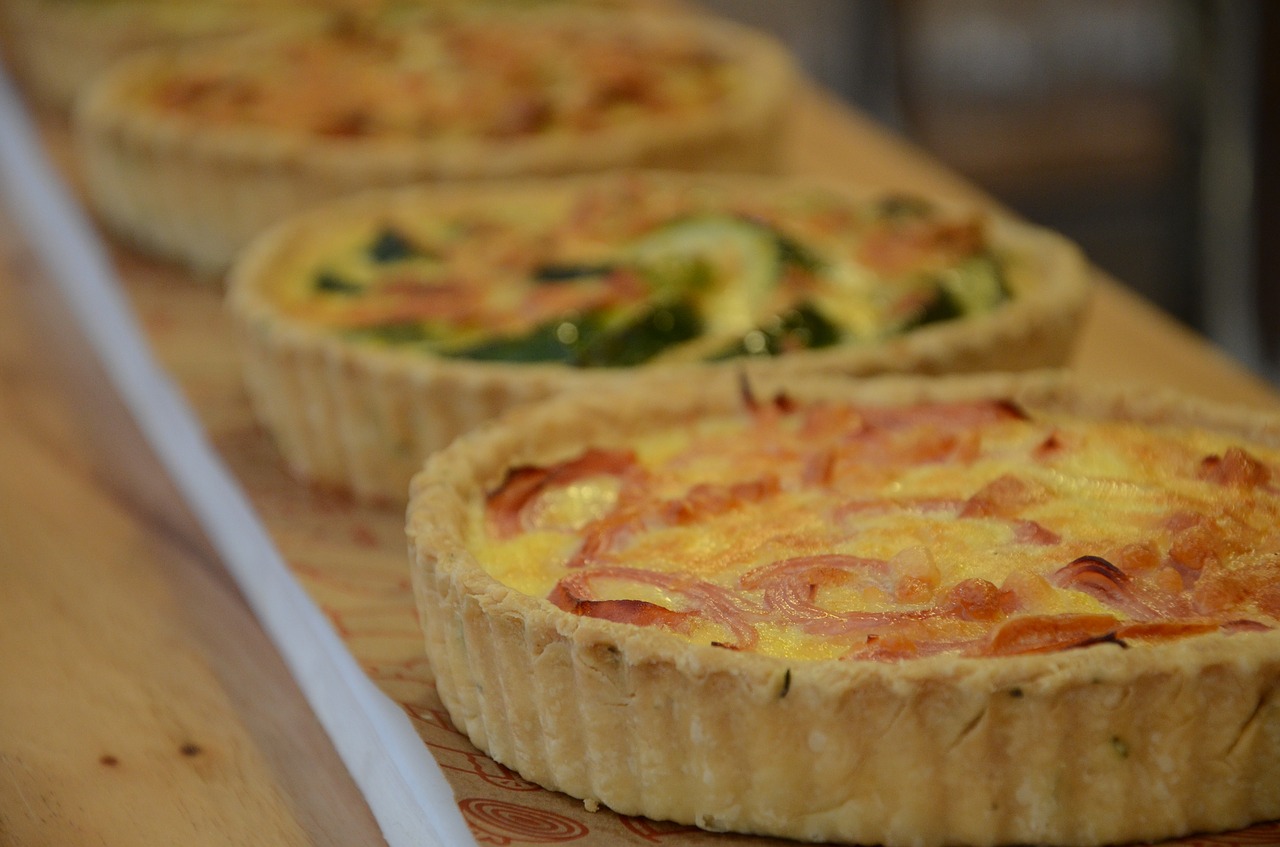Quiche Lorraine, a name that evokes the charm of French cuisine, is a dish beloved for its creamy, savoury filling encased in a buttery crust.
Originating in the region of Lorraine in north-eastern France, this quiche has a surprisingly rustic history that highlights the influence of various European culinary traditions. Initially a simple meal for farmers, Quiche Lorraine has evolved over centuries, becoming a symbol of French elegance and comfort food worldwide.
The term quiche derives from the German word kuchen, meaning cake, a nod to the Germanic influence in the Lorraine region, which borders Germany. The earliest versions of Quiche Lorraine date back to the 16th century, when it was a bread dough pie filled with an egg and cream custard, often seasoned with smoked bacon. Unlike today’s quiche, which often features a buttery shortcrust, early quiche recipes used bread dough, giving the dish a heartier, more rustic quality that was ideal for feeding the rural working class.
The original recipe contained just eggs, cream, and lardons – small pieces of smoked bacon. Farmers and villagers made the most of what was available – typically staples from their farms, including fresh eggs and cream from cows or goats, and cured meats from local livestock. This combination of rich cream and salty, smoky bacon became a defining feature of Quiche Lorraine. With its hearty, nourishing ingredients, quiche served as an energy-rich meal, satisfying workers during the harsh winter months.
In the 19th century, French chefs elevated Quiche Lorraine from a regional specialty to a more refined dish. The traditional bread crust was swapped for the lighter, flaky shortcrust pastry we know today.
By the early 20th century, quiche had become a favourite in French cities, moving from rural kitchens to bustling urban cafés and bistros. And cooks began experimenting with variations on the classic, adding cheese, onions, mushrooms, and herbs to enhance the flavour and create new textures.
In France, purists insist that true Quiche Lorraine should only include eggs, cream, and bacon – no cheese – though modern adaptations often break this rule. In other parts of Europe and the United States, quiche may feature vegetables, seafood, or even a touch of spice, adapting the dish to diverse palates and preferences.
Whether served warm from the oven with a simple salad or cooled and sliced as a savoury snack, Quiche Lorraine remains a dish that captures the essence of French culinary tradition, melding rustic origins with refined tastes.







Click here to change your cookie preferences